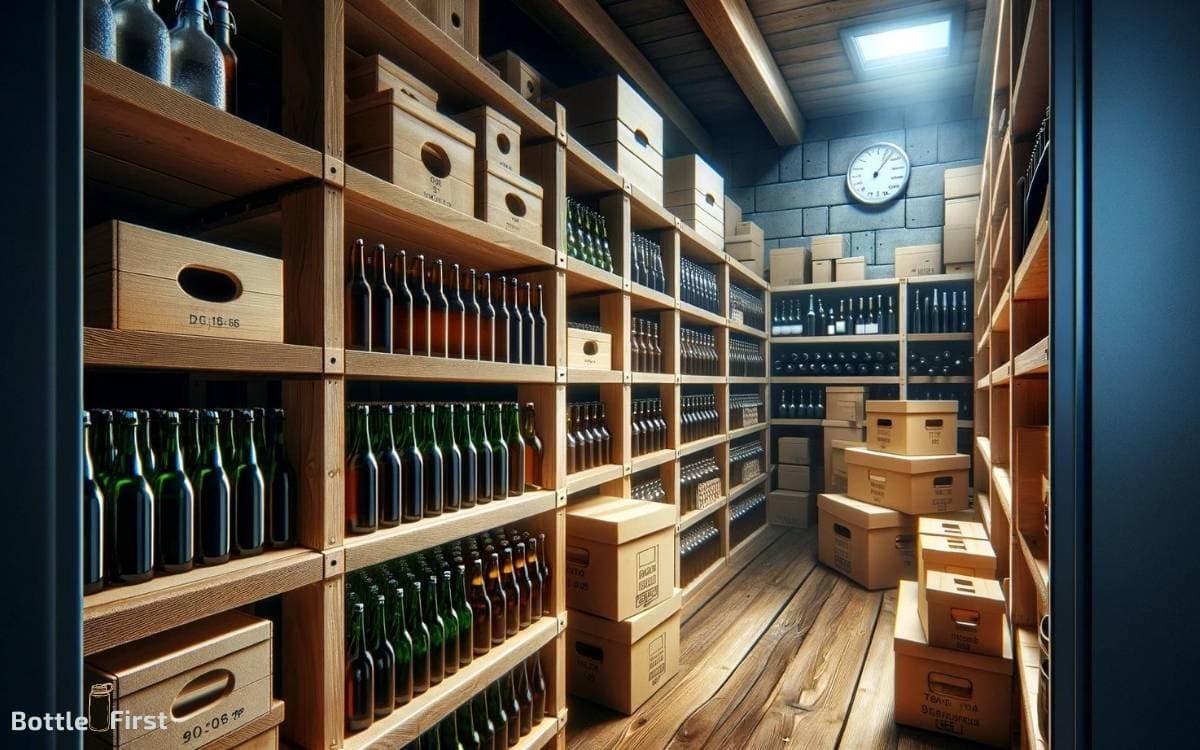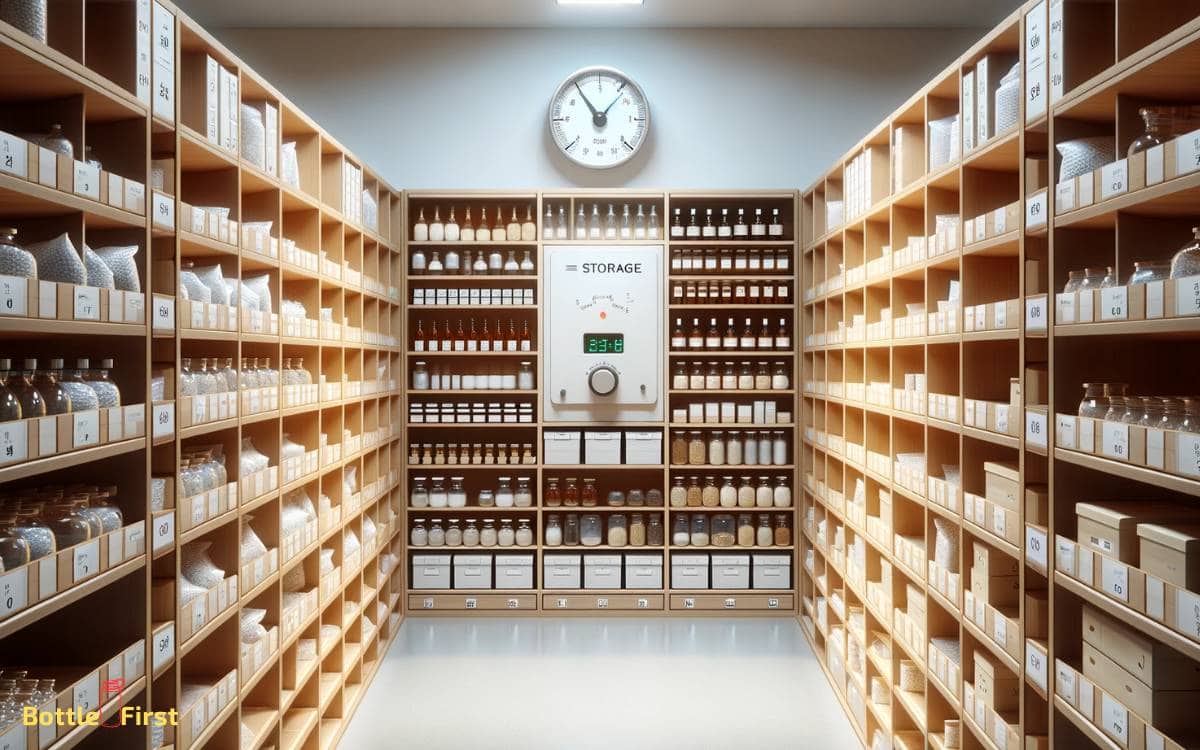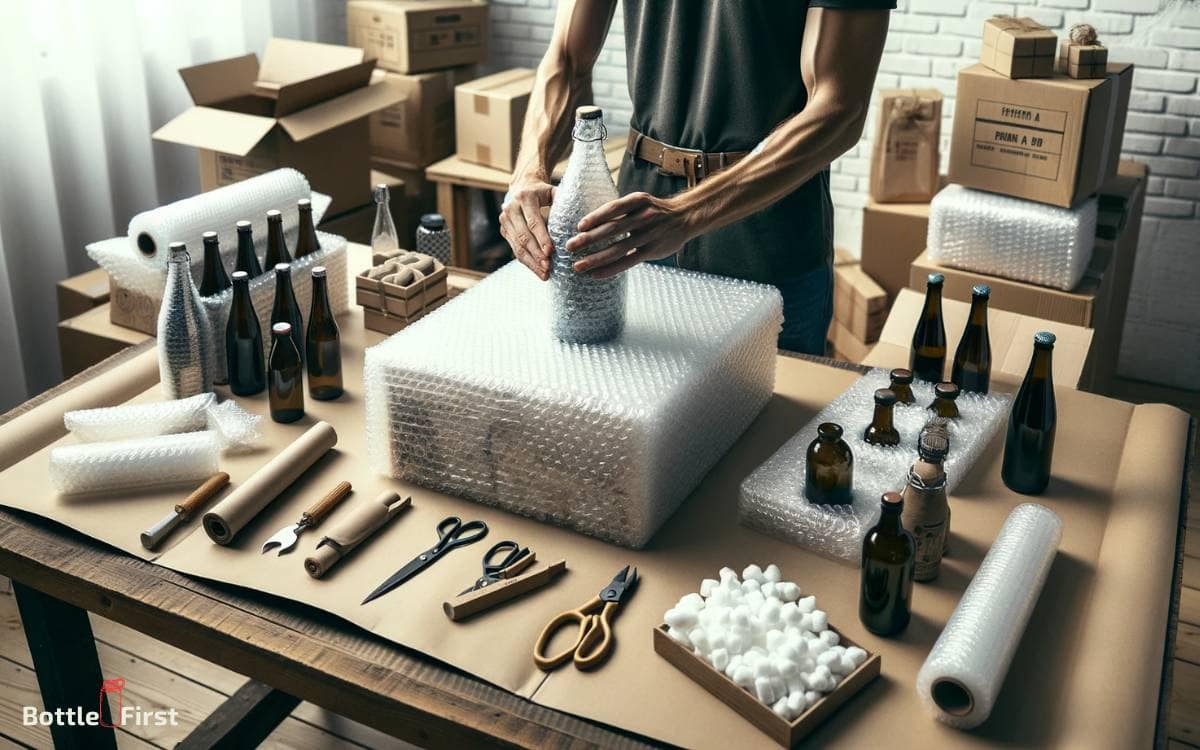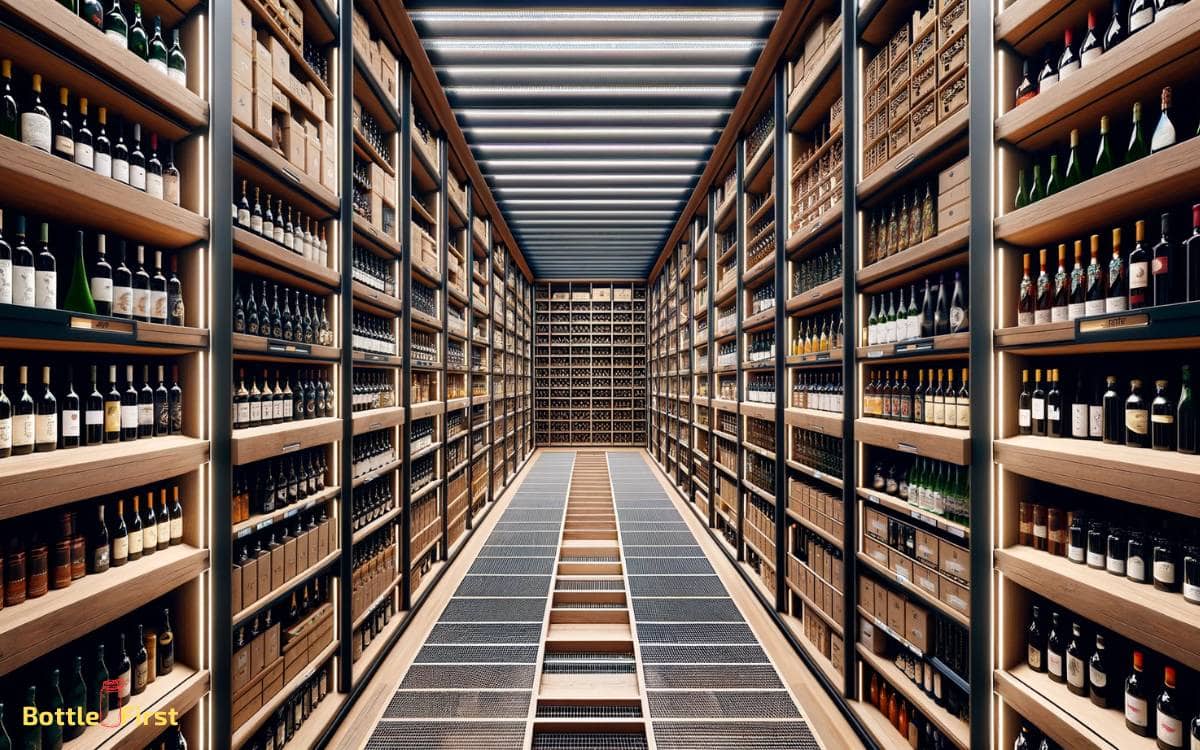How to Store Glass Bottles? 5 Easy Steps!
To store glass bottles effectively, choose a cool, dark place away from direct sunlight and fluctuations in temperature.
Ensure the bottles are stored upright to prevent leaking and consider using storage racks for organization.
Additionally, keep the environment clean to avoid contamination and protect the bottles from physical damage by avoiding overcrowding.
Proper storage of glass bottles is important to maintain the integrity of their contents and prevent breakage.
Here are some quick steps:
Secure and streamline your glass bottle storage with these expert tips for long-lasting preservation and ease of access.
Storing glass bottles properly is crucial for their preservation. To do so, select a storage area that is cool, dark, and free from temperature swings, such as a basement or a cupboard away from appliances.
Bottles should be kept upright to avoid leaks and the degradation of their contents. Use racks or shelving designed for bottles to keep them neatly organized and easily accessible.
The storage environment should be kept clean to prevent contamination, and make sure to space the bottles out to prevent them from knocking into each other and breaking.
Key Takeaway
Step 1: Choosing the Right Storage Location
You should place your glass bottles in a cool, dry, and dark location to preserve their quality and prevent damage.
Consider using a dedicated storage area that offers a stable temperature, such as a cellar or a pantry with limited exposure to sunlight. This will help to maintain the integrity of the contents by minimizing temperature fluctuations.
Additionally, you might want to explore innovative storage solutions like climate-controlled cabinets or adjustable shelving systems that can accommodate different bottle sizes and shapes.
Step 2: Properly Cleaning and Drying Glass Bottles
After emptying the glass bottles, rinse them thoroughly with warm, soapy water and allow them to air dry completely before storing.
To ensure a deep clean, consider using a bottle brush to reach the bottom and corners. For stubborn residue, a mixture of vinegar and water can be used as a natural and effective cleaning solution.
Additionally, to speed up the drying process, utilize a drying rack or place the bottles upside down on a clean towel to allow for proper air circulation.
Remember to inspect the bottles after drying to ensure there are no remaining water spots or soap residue.
This thorough cleaning and drying process won’t only maintain the integrity of the bottles but also ensure that they’re ready for their next use.
Step 3: Utilizing Protective Packaging and Cushioning
Once the glass bottles are thoroughly cleaned and dried, use protective packaging such as bubble wrap or foam inserts to cushion and safeguard them during storage.
Bubble wrap provides a cushioning layer that absorbs shocks and protects the bottles from impact. It also creates a barrier against temperature changes and moisture, maintaining the integrity of the bottles.
Foam inserts are designed to fit the bottles snugly, ensuring they stay in place and minimizing any movement that could cause breakage.
Additionally, consider using innovative packaging materials like air pillows or inflatable packaging to provide a custom-fit cushion around the bottles.
These modern packaging solutions offer excellent protection while being lightweight and easy to handle.
Step 4: Organizing Glass Bottles for Easy Access
When organizing glass bottles for easy access, it’s important to categorize them by type and label them clearly for quick identification.
Consider using innovative storage solutions such as adjustable shelving or modular storage units to maximize space and provide easy access to different types of bottles.
Utilize clear labeling systems, color-coding, or digital inventory management tools to streamline the organization process. This won’t only make it easier to locate specific bottles but also help in keeping track of inventory levels.
By implementing these innovative organizational methods, you can ensure that your glass bottles are readily accessible and efficiently managed.
Step 5: Monitoring and Maintaining Storage Conditions
To ensure the quality and longevity of your stored glass bottles, regularly monitor and maintain the storage conditions, such as temperature, humidity, and light exposure.
Proper monitoring and maintenance can prevent damage and preserve the integrity of the bottles and their contents.
Here’s a table to help you keep track of the ideal storage conditions:
| Storage Condition | Ideal Level |
|---|---|
| Temperature | 55-65°F |
| Humidity | 50-70% RH |
| Light Exposure | Low or UV-filtered |
Conclusion
So there you have it! With the right storage location, proper cleaning and drying, protective packaging, and organized storage, your glass bottles will stay safe and secure.
Just keep an eye on the conditions and give them some TLC, and you’ll be good to go.
Happy bottle storing!






